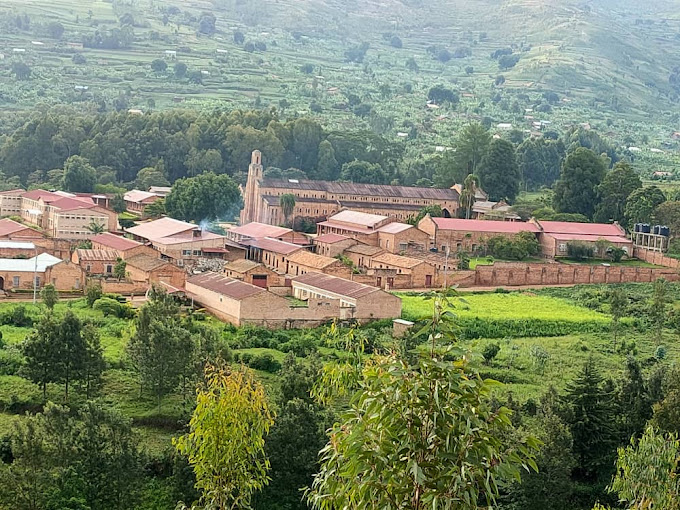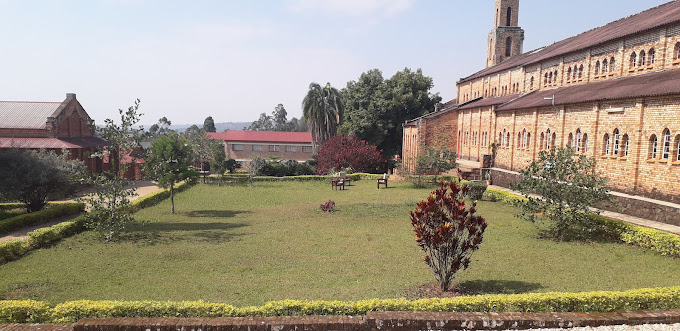
Nyakibanda Major Seminary
October 18, was day 14 of the trial of Eugene Rwamucyo, the director of public health department from National University of Rwanda during the 1994 Genocide against Tutsi.
From October 1 through October 30, Rwamucyo, a medical doctor and lecturer at the university is appearing before Paris Court of Assizes to answer allegations related to the Genocide.
He faces trial on charges of genocide, complicity in genocide, crimes against humanity, complicity in crimes against humanity and conspiracy to prepare genocide and other crimes against humanity.
Among others, Rwamucyo is accused to have buried people alive at Nyakibanda Major Seminary and the adjacent Nyumba parish with intention to conceal the mass murder.
In this trial, the defence quoted one Michel Murenzi, currently a priest in Italy, who was a lecturer in Nyakibanda during the 1994 Genocide committed against Tutsi, but he claims to know little or absolutely nothing about the tragedy.
However, where he happens to admit that he saw “people being killed”, he said it was none of his business to do something towards their safety, because, he didn’t have a vocation of martyrdom.
Father Murenzi who has been in Italy since the last 30 years now, stated that he had known Eugène RWAMUCYO before the genocide. At the major seminary of NYAKIBANDA, they “ended the same class in 1979/1980.”
The accused left the seminary at the end of the first year “for unknown reasons and they only reconnected in 1994 still in the same place where Murenzi had become a lecturer in charge of Biblical Sciences.”
The witness was asked several questions about the 1994 Genocide against Tutsi where more than 1 million tutsi were killed, but he said he knew nothing about it. For example, he said that he did not know who had killed whom in Kibeho.
During the Genocide, 30,000 tutsi were killed in and around the church, but Gonecide survivors said that the number is far bigger than this because there are bodies that were not found for decent burial. Some of the victims were burnt inside the church, part of which is now serving as a genocide memorial. The victims lay to rest in Kibeho memorial.
Some priests are accused to have played a role in the massacre of Kibeho, including Emmanuel Uwayezu, now allegedly ministering in France.
Back to Father Murenzi, he alleged that “many people were killed in Kibeho, and they were mainly Tutsis.”
He claimed that he once went to Kibeho, but not at the church, to an extent that he even didn’t manage to know the parish priest during his time.
He claimed to have remained in Nyakibanda, to handle administrative matters, but on some occasions, he would go out to see the displaced people whom he could give some sacraments, including penitentia, which consists of confession of sins.
Father Murenzi claimed to have seen at a roadblock “men carrying guns checking national identity cards, adding however, that he didn’t know whether holding an identity card marked Tutsi posed any problems for the holder. He only heard it said but has never witnessed it.
“It seems that Tutsis were taken in for questioning,” Father Murenzi said adding that he he doesn’t know what happened to them.
After sometimes, he claimed going to Butare to hide at Karubanda minor seminary because he was hearing that there was a crisis in the country. He could hear guns, but he said he didn’t know who was being shot at.
Abbé Murenzi continued to answer the court President’s questions, always with short answers.
“The Interahamwe? I don’t know them,” he told court to the surprise of the audience.
On 27 April 1994, when he returned from BUTARE, many displaced people had been killed in Nyakibanda, “with corpses piled up and decomposing, which prevented him from speaking. ”
He said it was difficult for him to try to find out what had happened because ‘ a lot of people were going wild and killing everyone ’. With this, he said, bodies started decomposing and the Butare health services started intervening to bury them, through the support of public health services.
He said that one morning, he saw RWAMUCYO, who greeted him and told him that he had come to see him. The witness cannot say how long he stayed with Rwamucyo: in any case, he did not spend the night in NYAKIBANDA. He had not invited him to return.
The priest said he met him outside the seminary from which he had left‘ to get some fresh air’. He had not gone to see the corpses because he was afraid of being killed. Towards the end of his statement, Abbé MURENZI said that when he had gone out ‘to get some fresh air’ he had experienced a feeling of sadness, that he had even often cried!
‘Any survivors?’ asked the presiding judge. He remembers that a young girl was brought to him, found among the
corpses, but by the time he went to fetch her some milk, the killers had taken her away and killed her.
When confronted, he said that on his return to the major seminary, he had seen ‘ dying people “. The priest replied:
” It was a deduction I had made. I imagined that there might be survivors. However, he confirms that no one
looked after the survivors.
Abbé MURENZI said he did not see Rwamucyo give instructions to the engine driver who was burying the bodies in mass grave. However, that is what he had said earlier during the confrontation.
“Probably because of a faulty memory!” he said.
The presiding judge insisted and asked the priest if the case was the genocide against Tutsis or not, but the priest replied:
‘I didn’t immediately understand that it was genocide. I realised when ‘they’, the UN, used that
term.Well before the ICTR. When a group is eliminated for what it is, that’s genocide. I left when I was afraid of
the arrival of the RPF, I was above all afraid of death,” he said.
After seeing these massacres, Murenzi said he left for Gikongoro and then Zaire, where he stayed for several
months before returning to Italy. Since then, he has never returned to Rwanda. For him, it was the best
solution ‘ to be at peace ’.
“During the genocide, Father, you were not a great witness of evangelical love! Do you have any regrets?’ the
presiding judge asked in an almost religious tone, in a confessional voice, underlining the turmoil he seemed to be
experiencing at this point in the hearing.

Father Murenzi answered: “No regrets. I did the right thing. I didn’t have a martyr’s vocation. My conscience is not
entirely clear. Fear kept me awake at night. I have nothing to regret. Thank you.”
On a question from a juror, Father Murenzi said he was sorry that the bodies had not been identified and that
there had been no proper religious ceremony.
However, he said he prayed for the victims during the mass and confessed to some of them! ’ I prayed for these poor people who had been killed unjustly. Abbé Thaddée and I concelebrated’.
The president pointed out that priests and nuns have been tried for Genocide.
“I know that. It’s not my role to judge. I am concerned if they have betrayed their mission. I’ve asked myself
questions but haven’t found an answer. It’s the court that has the evidence. It hurts me to see that someone has
betrayed the teaching that was given to others. I’m a priest in charge of several parishes. I’m a pastor, I do
what I can to help people,” he said.
Still on questioning by the president, the witness said he had not understood what was happening in BUTARE
during his stay; he could hear the bombs and bullets.
As for SINDIKUBWABO’s speech and the death of Prefect Jean-Baptiste HABYARIMANA, he said he had not heard about it. He added that it was the role of the court to decide whether RWAMUCYO was guilty.
Maître MATHE gave the witness the opportunity to add a few words. She tried to understand why, for example,
he said he did not know the Interahamwe.

